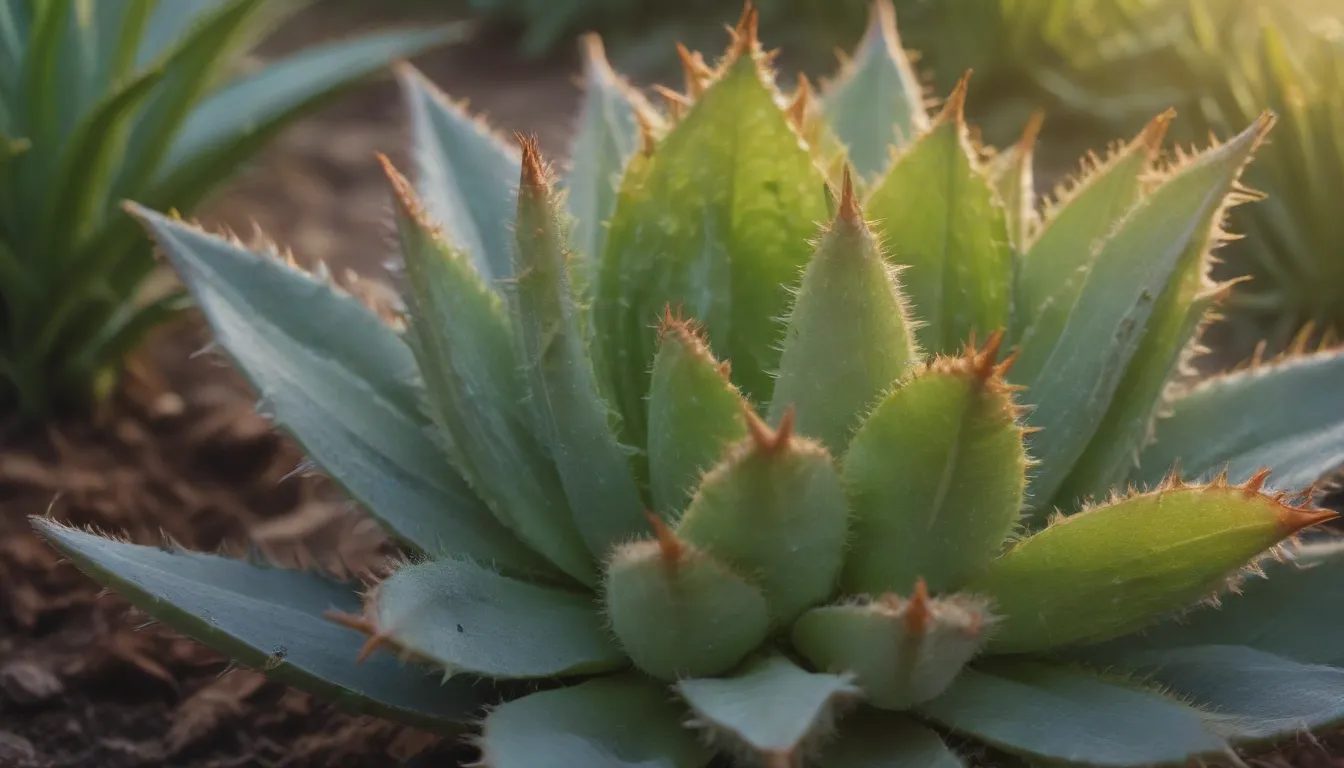All You Need to Know About Growing Aloe Ferox Like a Pro Gardener

If you’re looking to add a touch of South Africa to your garden or home, growing aloe ferox, also known as cape aloe, is a fantastic choice. This evergreen succulent is revered for its striking appearance, with its thick, serrated leaves and colorful orange flowers that add a splash of vibrancy to any space.
Native to southern Africa, aloe ferox is a hardy plant that thrives in hot, dry climates. While it can be grown indoors as a houseplant in temperate regions, it truly thrives when exposed to plenty of sunlight and well-drained soil. In this comprehensive guide, we’ll delve into everything you need to know about caring for aloe ferox like a pro gardener.
Aloe Ferox Care Tips
Light
Aloe ferox is a sun-loving plant that thrives in direct sunlight. When grown outdoors in warm climates, it can withstand full sun, although providing light afternoon shade in regions with scorching summers can benefit the plant. As a houseplant, position your aloe ferox in a bright, south-facing or west-facing window to ensure it receives adequate sunlight.
Soil
To promote optimal growth, plant your aloe ferox in well-drained, sandy loam soil. You can opt for a ready-made cactus soil mix or create your own by adding perlite or coarse sand to a standard houseplant potting mix. This blend will help improve drainage and prevent waterlogging, which can lead to root rot.
Water
Aloe ferox is a drought-tolerant plant that prefers arid conditions. Allow the potting mix to completely dry out before watering deeply. Remember, it’s better to underwater than overwater, as soggy soil can spell trouble for your plant. Consistent, but infrequent watering is key to keeping your aloe ferox healthy and thriving.
Temperature and Humidity
Maintain warm, temperate conditions for your aloe ferox, ensuring it doesn’t experience extremes in temperature. The plant cannot tolerate freezes below 25 degrees or scorching heat above 115°F. With regards to humidity, aloe ferox adapts well to average indoor humidity levels, making it a low-maintenance choice for indoor environments.
Fertilizer
Aloe ferox is a low-maintenance plant that requires minimal fertilizer to thrive. Indoor plants can benefit from a balanced liquid houseplant fertilizer diluted to half strength in early spring to support growth and flowering.
Pruning and Propagation
Pruning
Aloe ferox does not need regular pruning, but you can remove dead leaves at the base of the plant for aesthetic purposes. The lower leaves naturally turn brown and form a “skirt,” which you can leave in place or trim away as desired.
Propagation
You can propagate aloe ferox by taking stem cuttings from mature plants. Before propagating, ensure you have a mature plant, cactus soil, sterilized shears, and a small plant pot. Follow these steps to successfully propagate your aloe ferox and expand your plant collection.
Common Pests and Diseases
Pests
Aloe ferox, like other succulents, is susceptible to common houseplant pests such as spider mites and fungus gnats. Keep an eye out for signs of infestation and take prompt action to address the issue and prevent it from spreading.
Diseases
Overwatering can lead to root rot or crown rot in aloe ferox, while a fungal disease known as aloe rust can cause dark spots on the plant’s leaves. Proper watering practices and vigilant monitoring can help prevent these issues from affecting your plant’s health.
Blooming and Care
Blooming
To help your aloe ferox bloom, provide it with plenty of bright sunlight and suitable watering. Note that young plants or those grown from seed may take several years to flower, so be patient and provide optimal growing conditions.
Appearance
Aloe ferox blooms with vibrant orange or red flowers on tall, upright spikes that emerge from the center of the plant. These flowers can add a stunning pop of color to your garden or indoor space, enhancing the overall aesthetic appeal of the plant.
Maintenance Tips
After the blooms have faded, deadhead the flowers by cutting back the flower stalk at the base. This practice encourages new growth and helps maintain the plant’s overall health and vitality.
Final Thoughts
In conclusion, growing aloe ferox like a pro gardener is achievable with the right care and attention to detail. By following the tips and guidelines outlined in this comprehensive guide, you can cultivate a thriving aloe ferox plant that adds beauty and elegance to your indoor or outdoor space. Remember to provide adequate sunlight, well-drained soil, and moderate watering to ensure your aloe ferox flourishes and blooms with vibrant colors. With a little effort and dedication, you can enjoy the striking beauty of aloe ferox in your own home or garden. Happy gardening!





